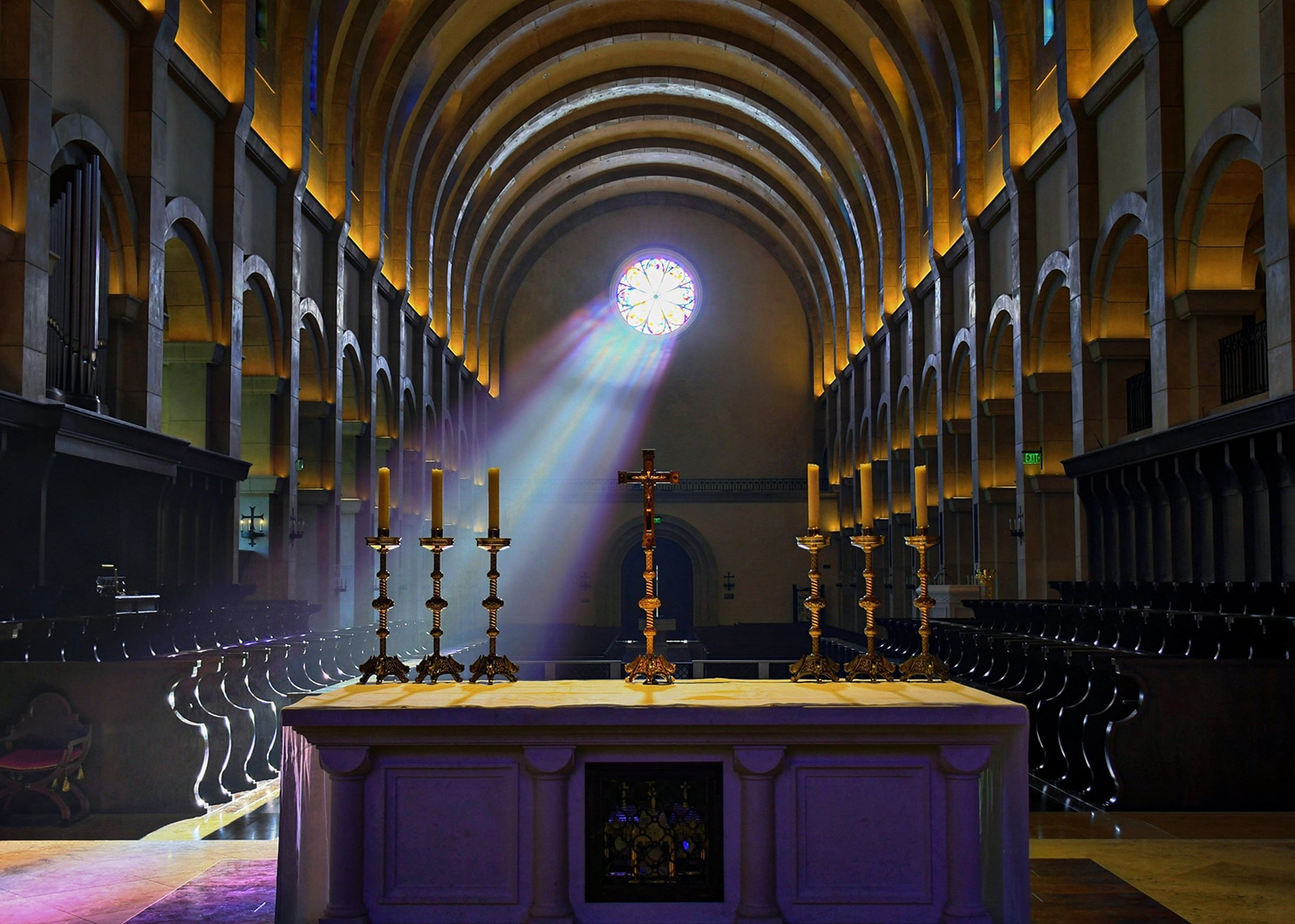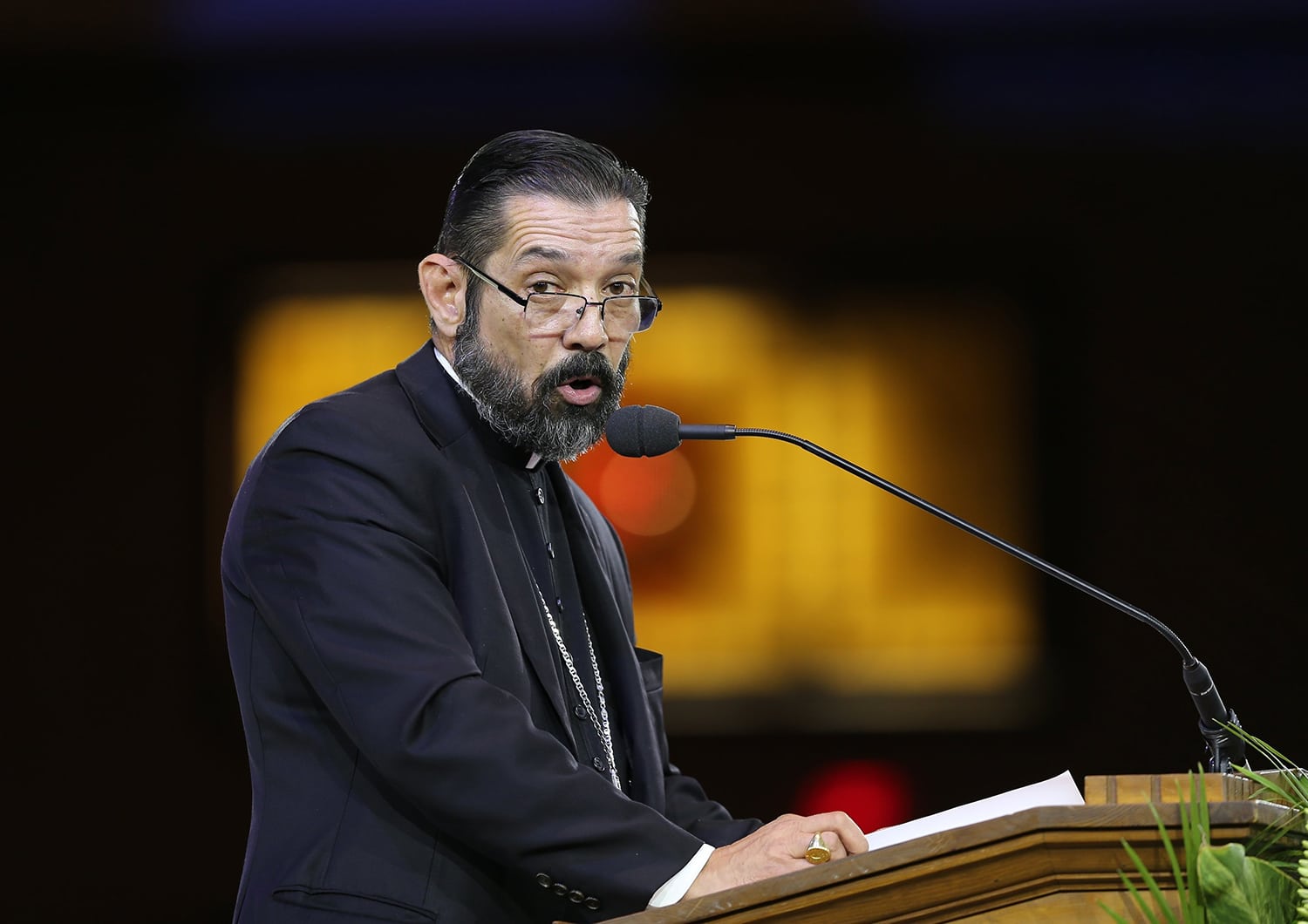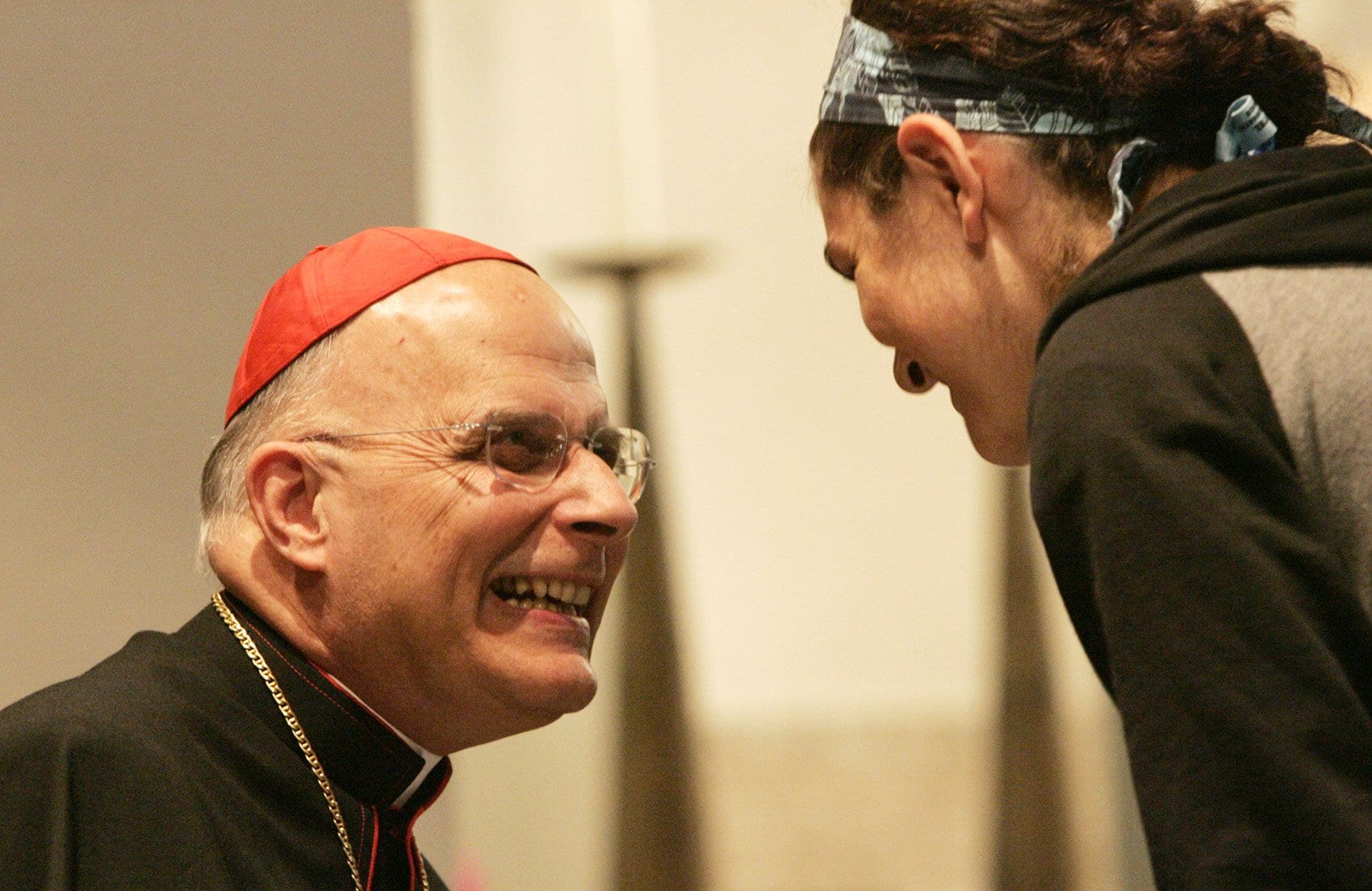(OSV News) — The Norbertines — one of the oldest surviving religious orders in the Catholic Church, established in France in 1120 — are not only, in the words of their founder St. Norbert of Xanten, “prepared for every good work.”
They’re also prepared to grow with both a new abbey in Orange County, California, and the repurposing of a century-plus-old convent and church in Springfield, Illinois.
“We’ve been blessed with a steady stream of vocations — there has been great growth,” said Norbertine Abbot Eugene Hayes, the abbot of St. Michael’s Abbey in Silverado, California. “And so in the early 2000s, we began to think about expansion.”
The new St. Micheal’s Abbey
That expansion culminated in May 2021 with the completion and dedication of an approximately $120 million building project just nine miles away from its 1961-era predecessor, a second-generation St. Michael’s Abbey that Liturgical Arts Journal hailed as “a glimmering beacon of unified totality.” Its Romanesque proportions, earth-toned stucco walls, and terracotta-colored tile roof conjure an Italian locale, but also blend harmoniously with the surrounding Santa Ana Mountains.
The complex includes a monastery, church, guest house, conference center, administration buildings and more that are home to almost 100 Norbertines — over 50 priests and nearly 40 seminarians studying for the priesthood. Officially known as the Canons Regular of Prémontré (after their mother house in Prémontré, France), Norbertines live in common, celebrating Mass, daily chanting the Divine Office and responding to the needs of the community surrounding them.
“It’s a new abbey but it’s an old foundation,” Abbot Hayes told OSV News.
Founders fled communism
It’s a foundation with a backstory worthy of a Hollywood spy thriller, too.
In July 1950, the abbot of the Norbertine abbey in Csorna, Hungary, received a secret tip: Communist authorities were soon to suppress the abbey and arrest its inhabitants. Seven priests of the community were determined — with the abbot’s blessing — to flee to Austria. Crossing barbed-wired and mine-scattered fields, barely avoiding border guards and finally swimming a 60-foot-wide river, they eventually reached safety — and then New York in 1952.
The fearless leader of the group? Father Ladislaus Parker, the first abbot of St. Michael’s.
“That was the beginning of our history,” said Abbot Hayes. “Our founding abbot … said that he would sum up the goal of the community that we would not reject anything good in the new, and we would maintain all that was good in the old,” Abbot Hayes recalled.
Abbot Parker died in 2010 but “all of us have taken that to heart,” shared Abbot Hayes. “When we speak about requests for help or new apostolates, that’s sort of the principle we fall back on: ‘Can we do it; is it in line with our charism?'”
Abbot credits tradition for inspiring vocations
Norbertine Abbot Dane Radecki, abbot of St. Norbert Abbey in De Pere, Wisconsin — where the seven fugitive Hungarian priests first arrived from New York before leaving for California — said that principle requires a sort of apostolic balance.
“It’s a tension wire that Norbert placed us on. We’re constantly being drawn more and more into ministry by the demanding needs of the church,” Abbot Radecki told OSV News. “But at the same time, trying to not lose the focus of our liturgical life and our community life.”
Abbot Hayes credits a very specific commitment to their 900-year-old traditions for the growth of Norbertine vocations.
“We have tried to maintain our fidelity to the Norbertine charism,” Abbot Hayes said. “We are clerics — priests — living in common, celebrating the liturgy of the church, and providing the care of souls in any place to which we have been summoned, to any apostolate we have been invited. That’s the basis of our life.”
Norbertine Father Jonathan Turba, St. Norbert’s vocation director, thinks the turbulence and division of the modern world also impacts discerners choosing amongst religious communities.
“We’re apostles of reconciliation, and we’re fed and guided by the Eucharistic love of Christ,” Father Turba told OSV News. “Those two charisms really play out amidst the polarization.”
Norbertine communities, he said, are “an example to the world of what it looks like to bring a variety of people together to live in common, to share everything in common and to find a way to find peace within intergenerational living. … It’s not about trying to find a community where everyone else is like me. It’s actually recognizing the differences.”
A life fiercely devoted to the Eucharist also draws many inquirers.
“Our history is very much bound up with the mystery of the holy Eucharist,” explained Abbot Hayes. “The initial representations of St. Norbert usually showed him with a book of Scriptures in his hand. But as time went on, he began to be looked to as an apostle of the holy Eucharist.”
A median age of 38
The median age of St. Michael’s Abbey residents — Norbertines who serve the community and parishes throughout the California dioceses of Orange, San Diego, San Bernardino and Fresno as well as the Los Angeles Archdiocese — is a fresh-faced 38.
“That’s not the usual situation today, in religious communities,” observed Abbot Hayes.
Nor is the witness of growing vocations.
The Center for Applied Research in the Apostolate at Georgetown University reports that in 1965, there were 22,762 religious order priests. By 2022, their numbers were halved to 10,234.
There are some 1,600 Norbertines worldwide, with abbeys, priories and convents in 23 countries.
A new Norbertine foundation
As the new St. Michael’s Abbey in California neared completion, Abbot Hayes said invitations to start foundations in other dioceses began to arrive. Meetings and group community discernment followed.
“The judgment of every one of those groups was that we should accept the invitation from Bishop (Thomas J.) Paprocki of Springfield, Illinois,” said Abbot Hayes. “And so on July 1 of this year, we began the common life with seven of our priests being the founders of this new community.”
Norbertine Father Augustine Puchner, prior of Corpus Christi Priory in Springfield, joked that, as a Milwaukee native, he was prepared for relocation from balmy California to the more frigid winters of Illinois.
In all of it, he sees God’s fingerprints.
“Around 20 years ago or so, the community — recognizing that we were growing — identified two long-term goals: One was to build a new abbey. And the second goal was to make a new foundation; to expand to a new location,” Father Puchner told OSV News. “It’s really interesting how in God’s providence, those two goals were actually accomplished so quickly. We just opened the new abbey in 2021. And it was only a year later that we were making the decision to come to Springfield. It’s a very exciting new beginning.”
As a name for the foundation was pondered, a flash of revelation provided the perfect answer.
“The inspiration came that since we’re really a Eucharistic order — St. Norbert is a Eucharistic saint — and then that we’re in the midst of this Eucharist revival,” the name therefore should be “something related to the Eucharist,” Father Puchner said.
“So that certainly was intentional. We wished to contribute to this renewal within the church by means of a Eucharistic revival,” he added.
Their diocesan host also was in agreement.
“When I first proposed the new name to Bishop Paprocki,” said Father Puchner, “he was like, ‘That’s it; perfect. ‘Corpus Christi’ — of course. It’s about the Eucharist.'”
Corpus Christi Priory
Corpus Christi Priory is the former site of the Chiara Center, operated by the Hospital Sisters of St. Francis. The new, yet old, priory in Illinois is a reflection of its California sister, also with Romanesque towers, an earth-hued exterior and ruddy-tiled roof.
“The kind of bittersweet portion of the story is that the sisters’ community has been declining,” said Father Puchner. “But they had the foresight and the wisdom to provide for a future on this beautiful piece of property by actively searching for another religious community.”
The sisters remain on campus and the Norbertine fathers now serve as their chaplains.
Concentrating on the apostolate of forming Catholics in the teachings of the faith, or catechesis, the Norbertine transplants from California have opened the Evermode Institute, christened after St. Evermode of Ratzeburg, Germany, the closest confrere of St. Norbert. Founded to serve Catholic teachers, catechists and administrators, Father Puchner said, “the program will focus first on teaching the teachers — and forming the formators.”
Bishop Paprocki “came up with the idea of the institute,” explained Father Puchner. “He said, ‘I need a ministry that will better equip those who are already teaching in our schools and parishes. I want them to have formation. I want them to have a program.'”
Offering a taste of the transcendent
An Aug. 15 inaugural Evermode event was met with enthusiasm for both its online courses and future in-person retreats and days of instruction at Corpus Christi, which Father Puchner portrays as a transcendent space.
“It’s an oasis. It’s a place of refuge; a place to sort of leave the world behind for a little bit,” Father Puchner said, describing the attraction their new home has to visitors. “When you cross that threshold — through the doors, into the church — there’s a peace and a calm and even a silence that really separates you from the world while you’re here. We want to bring everyone closer to God, closer to heaven, through our liturgy and through our presence here in Springfield.”
With no signs of slowing growth yet evident, the Norbertines are daily defying the narrative of decline surrounding contemporary religious vocations.
“It’s good news for the church,” said Father Puchner. “It really is a good news story for the whole church.”







